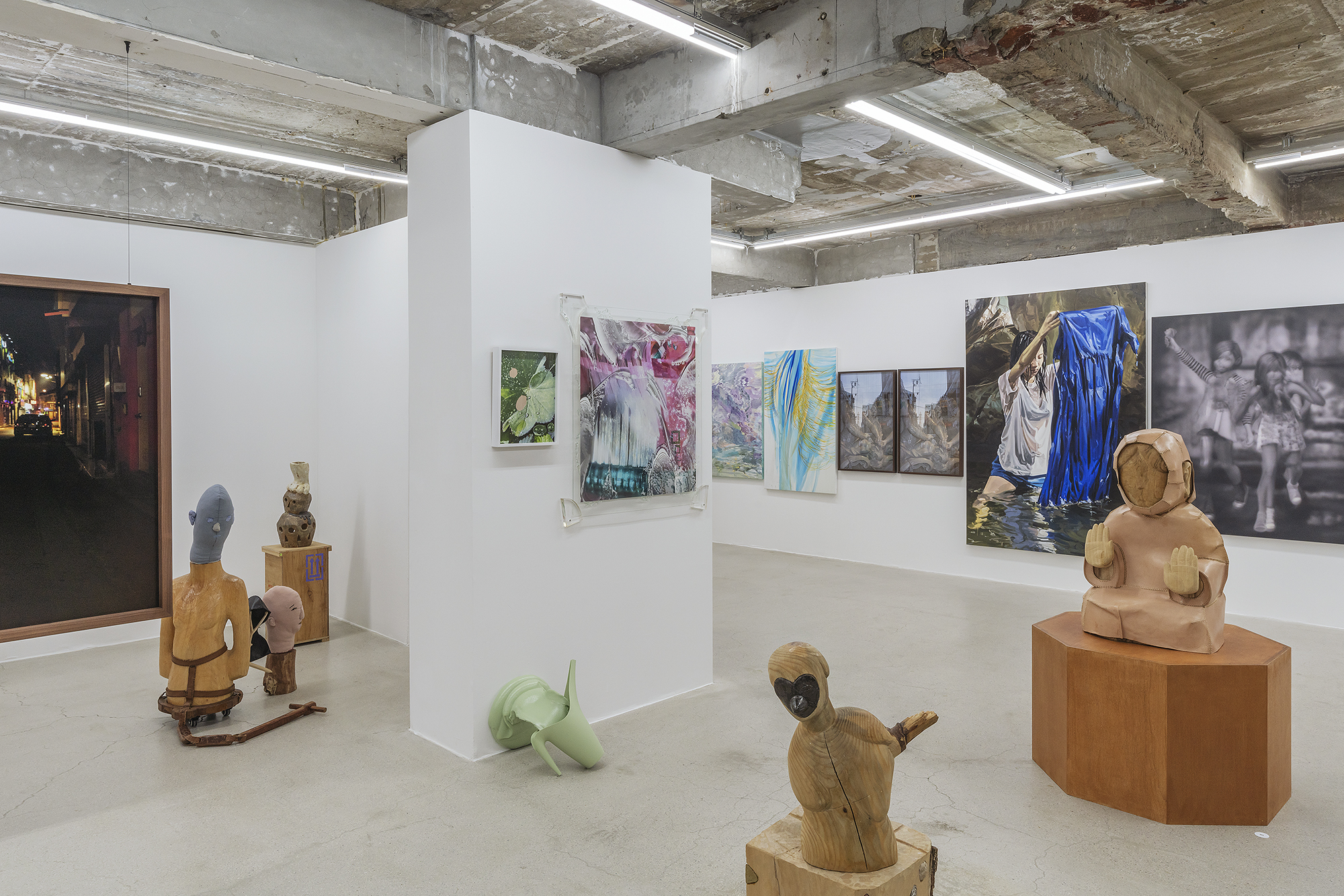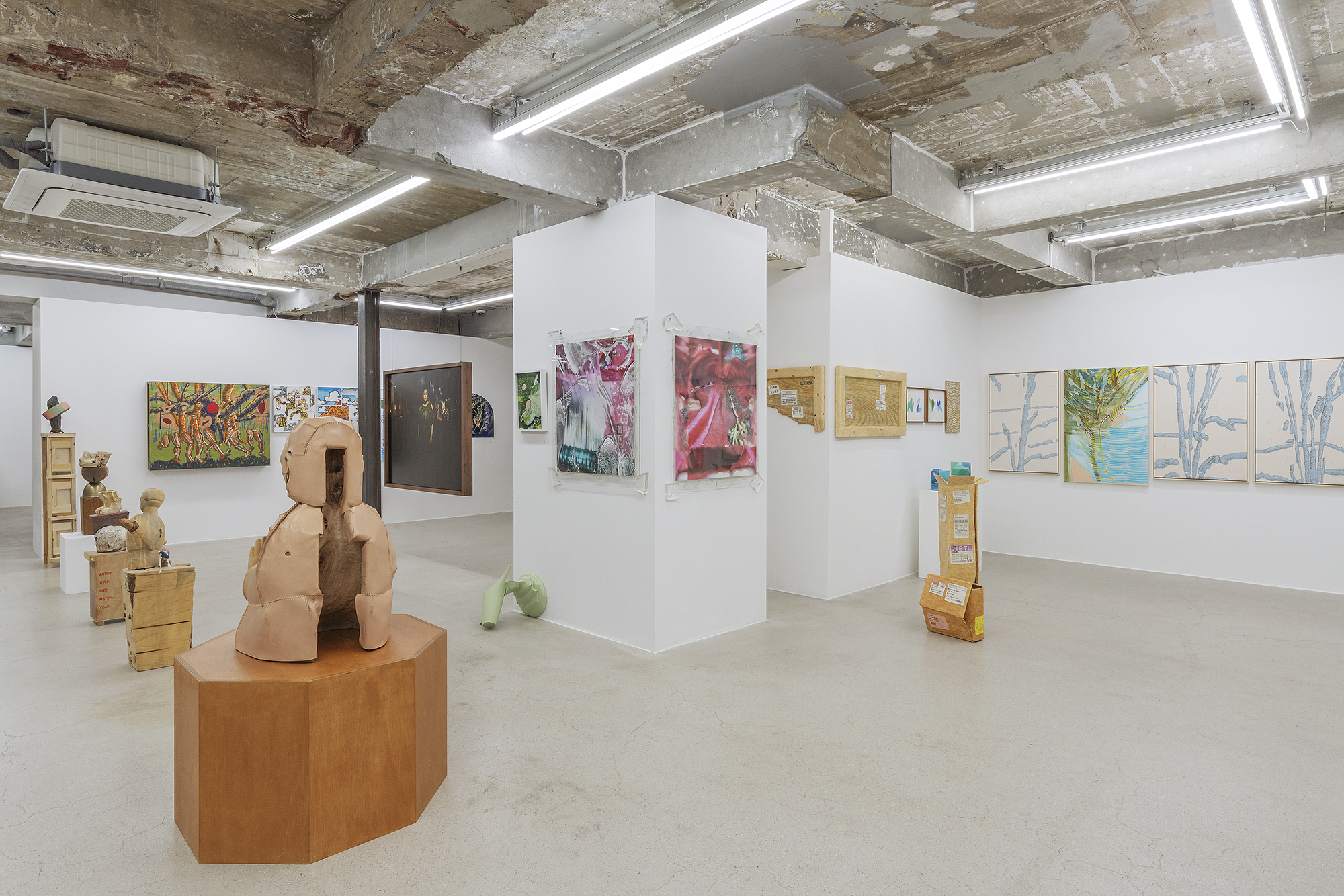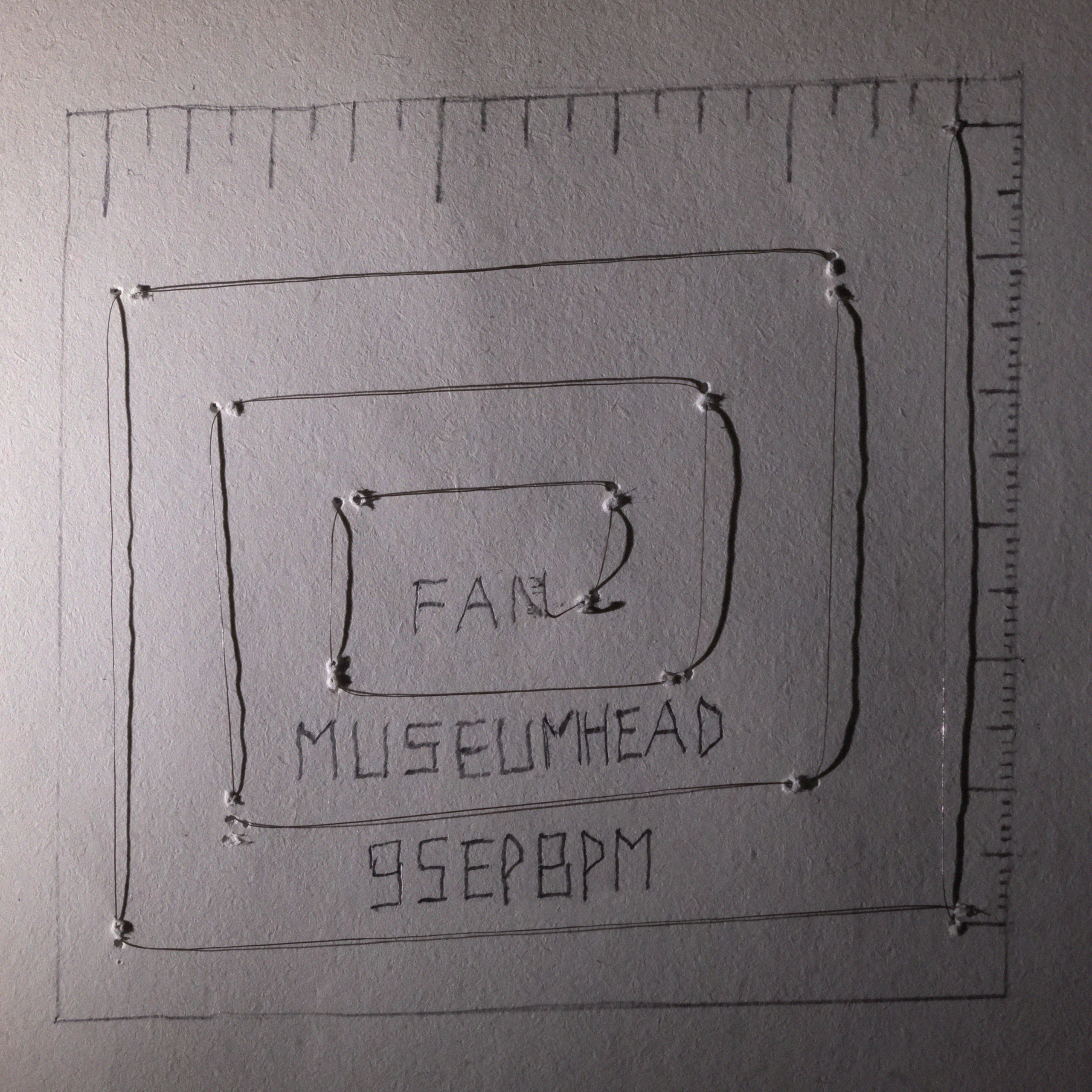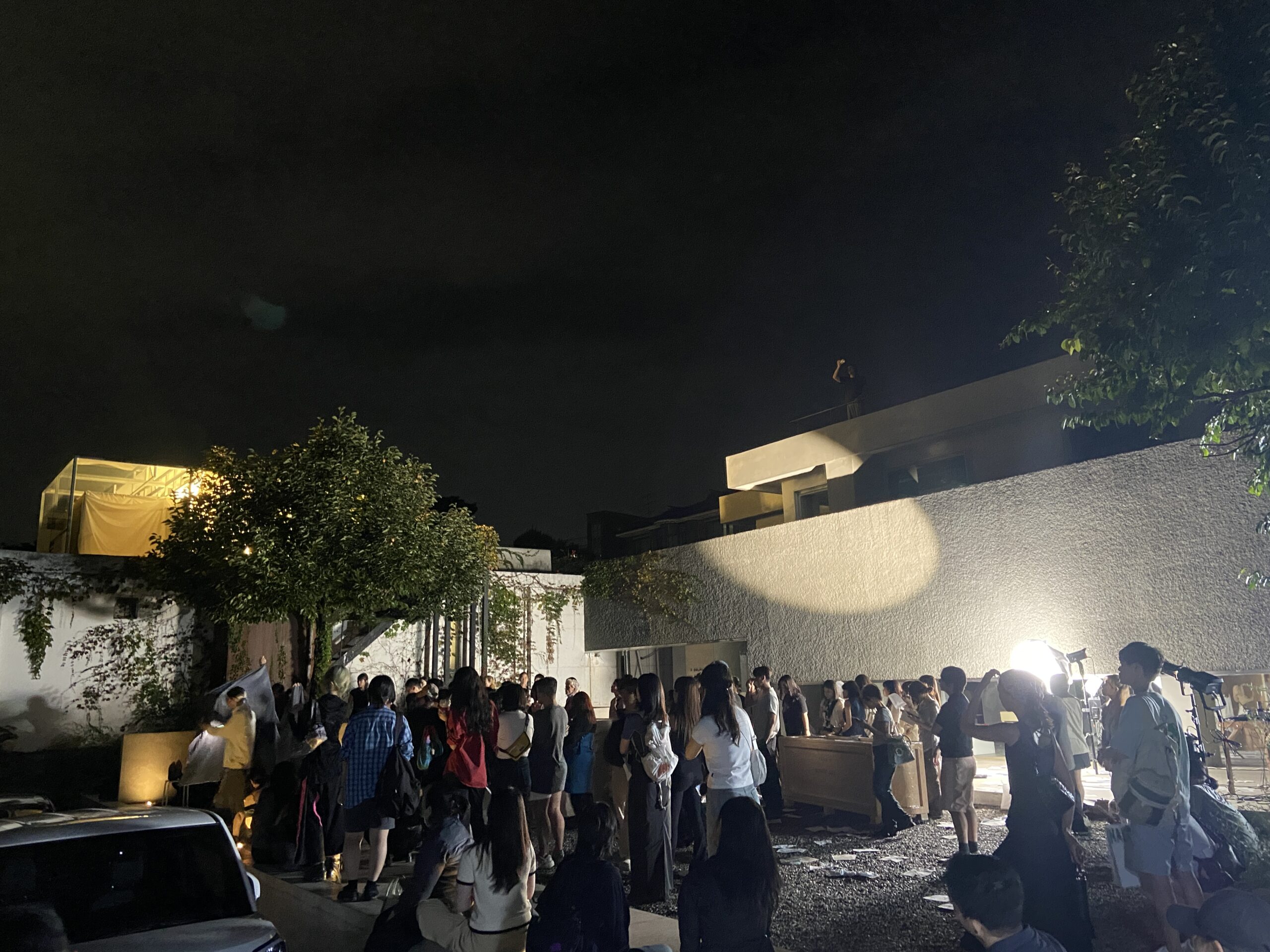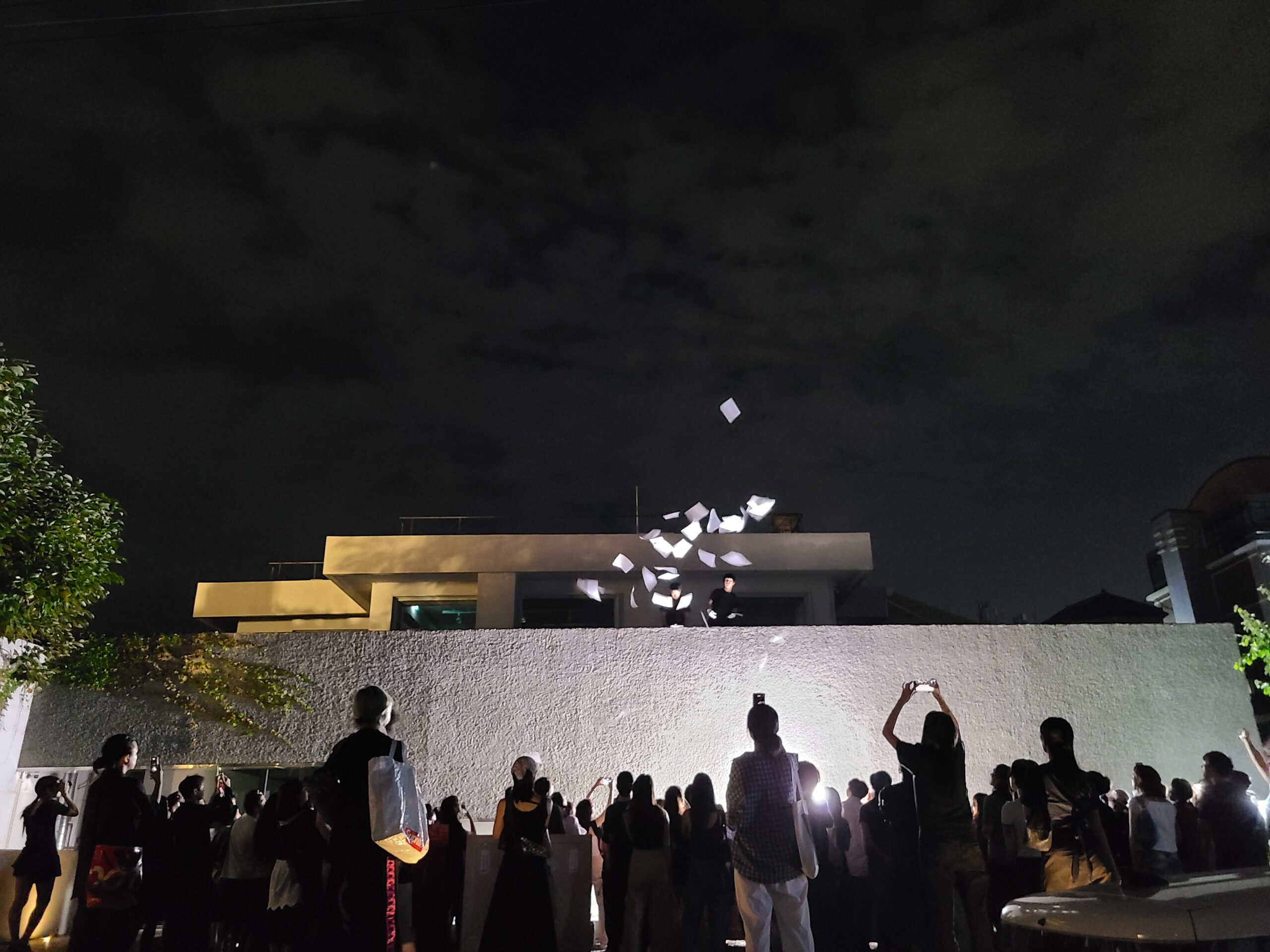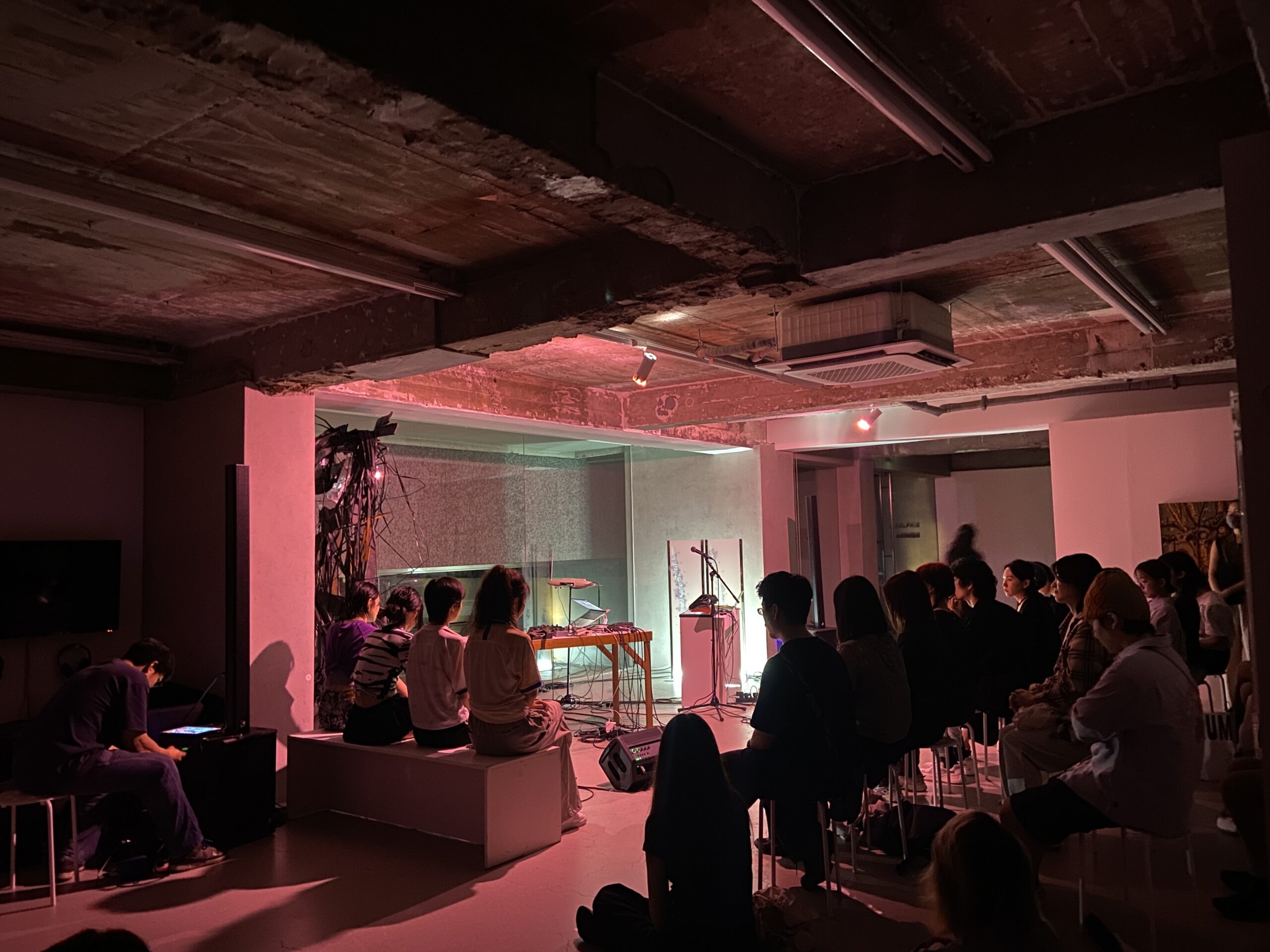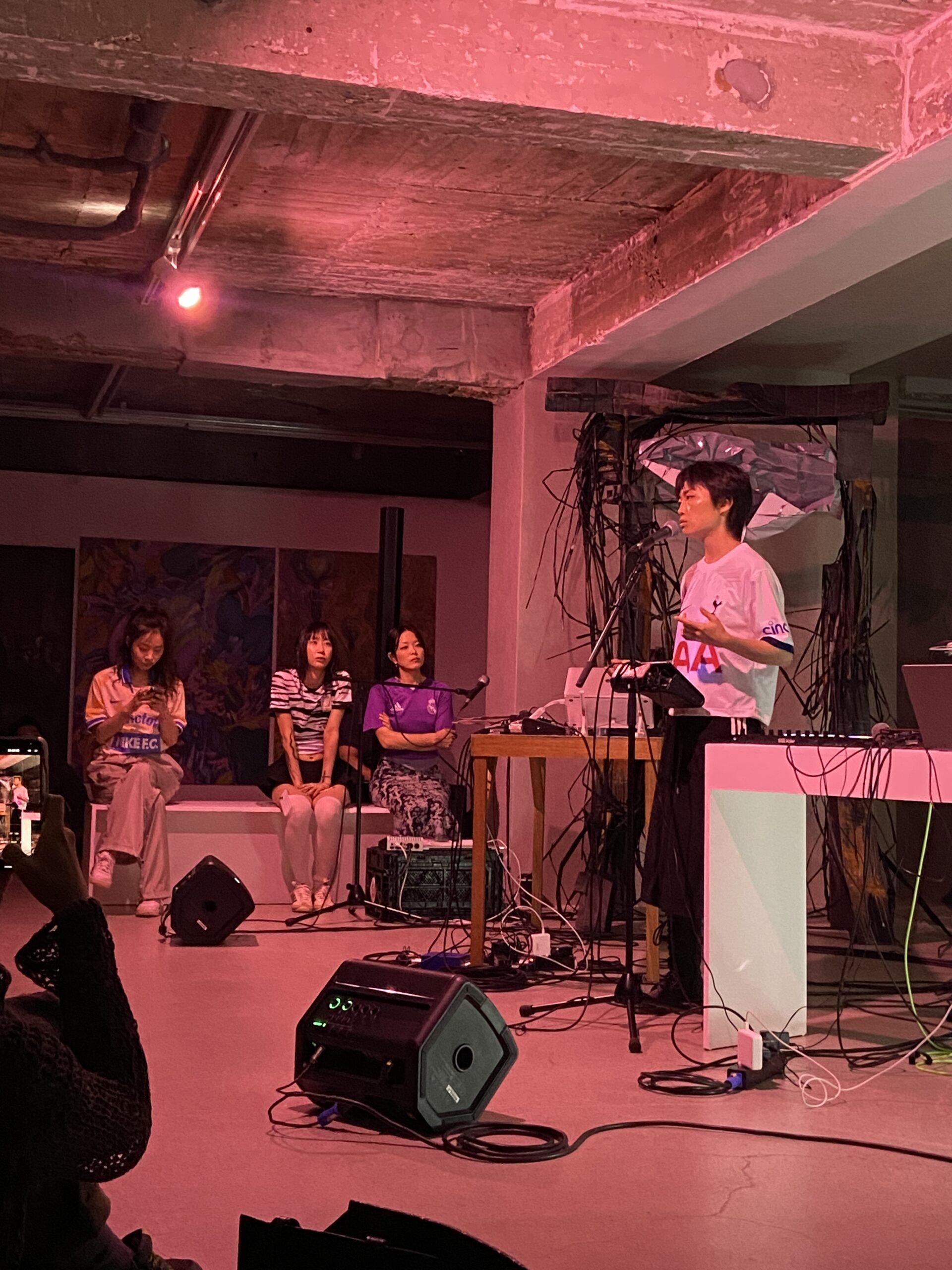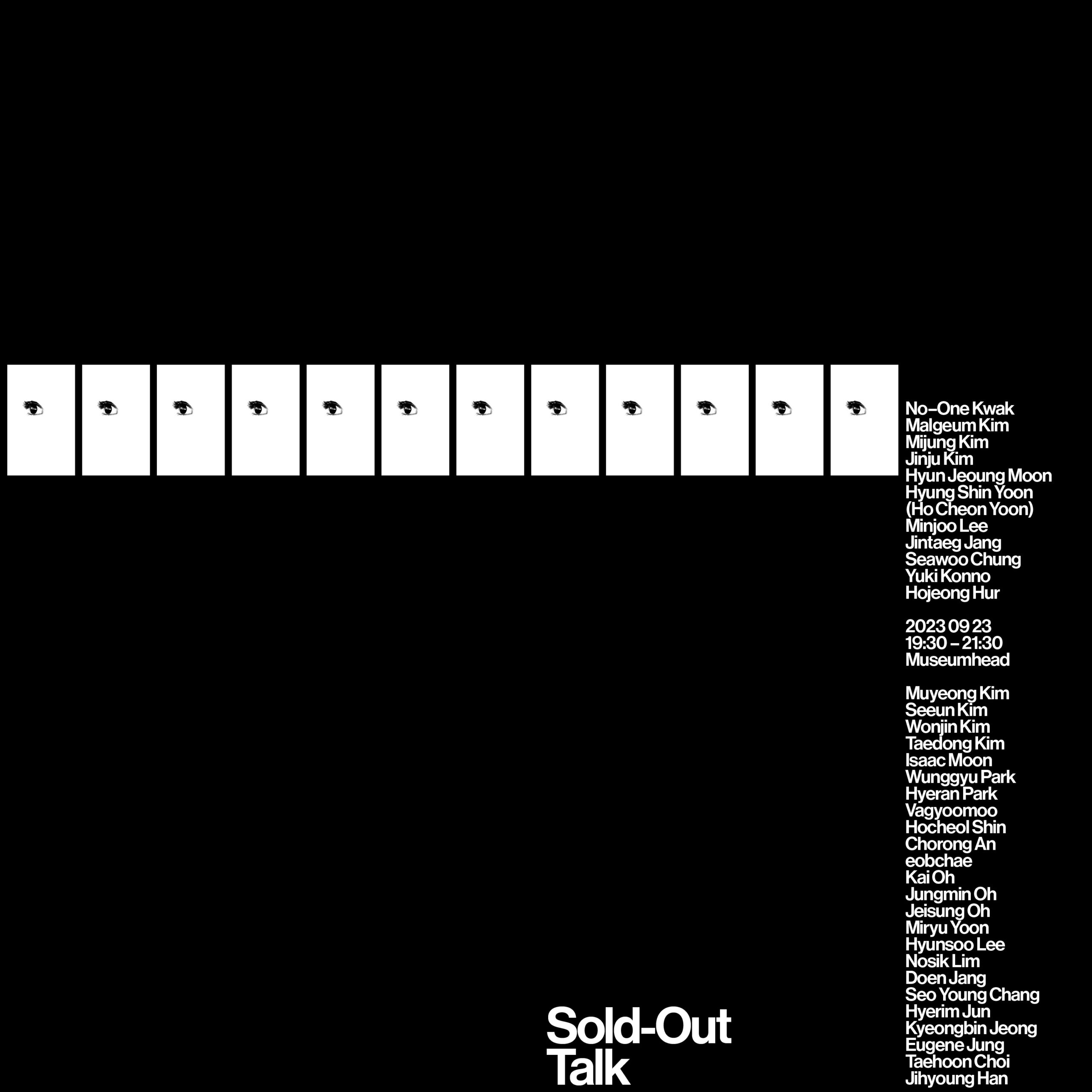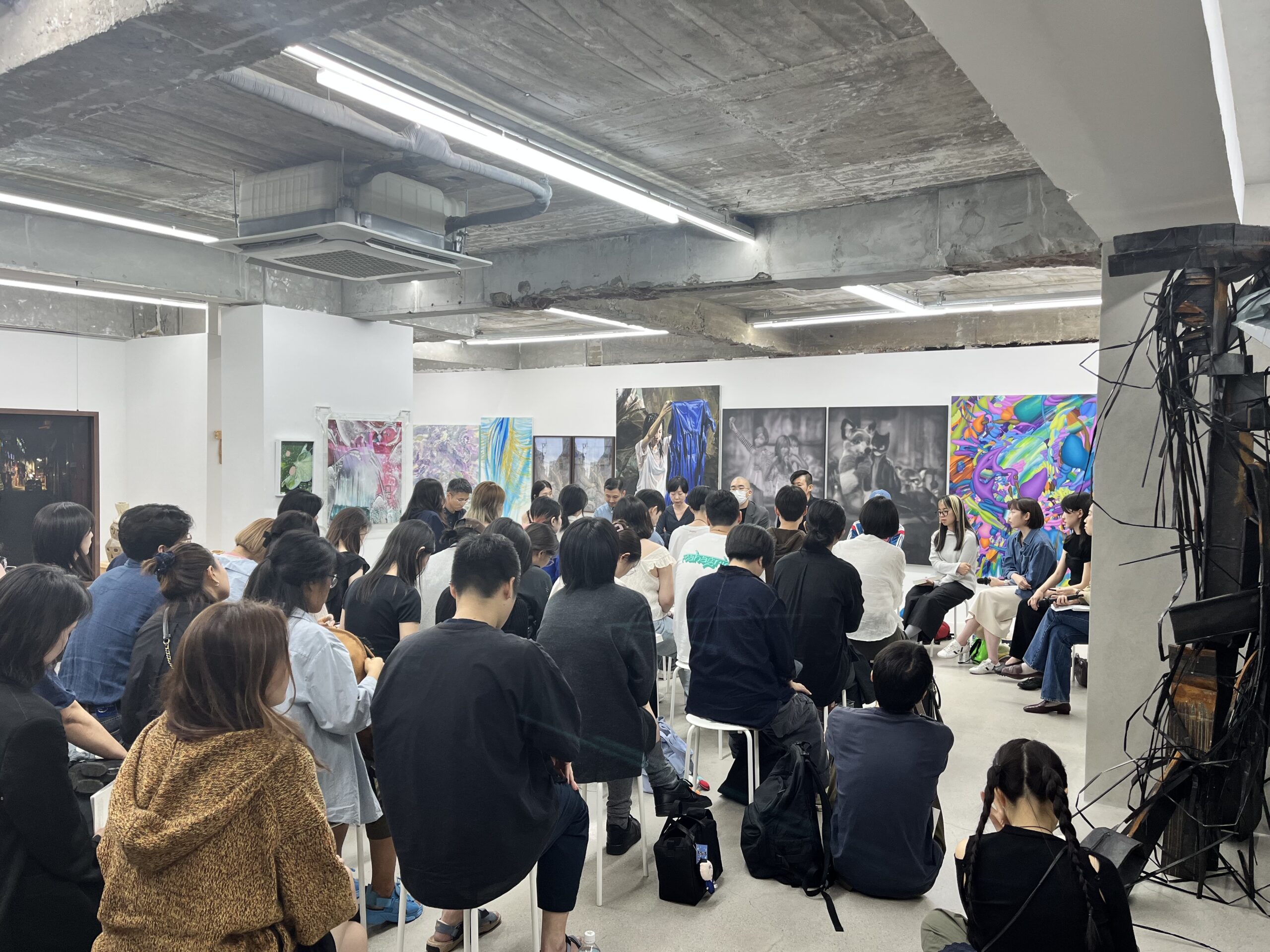《더비 매치 : 감시자와 스파이》
(1부)
2023.09.01.-23.
12:00-19:00 (일, 월 휴관)
참여 작가: 김무영, 김원진, 김세은, 김태동, 문이삭, 박웅규, 박혜란, 배규무, 신호철, 안초롱, 업체, 오가영, 오정민, 오제성, 윤미류, 이현수, 임노식, 장도은, 장서영, 전혜림, 정경빈, 정유진, 최태훈, 한지형
참여 필자: 곽노원, 김맑음, 김미정, 김진주, 문현정, 윤형신(윤호천), 이민주, 장진택, 정시우, 콘노유키, 허호정
▪️프로그램
09. 01. 16:00-20:00 – 오프닝 리셉션
09. 09. 20:00-21:30 – 퍼포먼스: 〈FAN〉
09. 16. 20:00-21:30 – 이름 없는 밴드의 발대식: 〈벤치 클리어!〉
09. 23. 19:30-21:30 – 토크: 〈Sold Out Talk〉(전시 자료집 현장 배포)
책임 기획: 권혁규
기획 및 진행: 허호정, 도혜민
그래픽 디자인: RecentWork
설치, 기술 지원: 스튜디오 가가구죽, 스윗사운드
번역: 이지수
주최, 주관: 뮤지엄헤드
후원: (재)예술경영지원센터, 문화체육관광부
𝘿𝙚𝙧𝙗𝙮 𝙈𝙖𝙩𝙘𝙝 : 𝙒𝙖𝙩𝙘𝙝𝙢𝙖𝙣 𝙖𝙣𝙙 𝙎𝙥𝙮
⠀
(Part 1.)
𝟬𝟭.-𝟮𝟯.𝗦𝗘𝗣.𝟮𝟬𝟮𝟯.
12:00-19:00 (closed on Sun, Mon)
Artist: Muyeong Kim, Seeun Kim, Wonjin Kim, Taedong Kim, Isaac Moon, Wunggyu Park, Hyeran Park, Vagyoomoo, Hocheol Shin, Chorong An, eobchae, Kai Oh, Jungmin Oh, Jeisung Oh, Miryu Yoon, Hyunsoo Lee, Nosik Lim, Doen Jang, Seo Young Chang, Hyerim Jun, Kyeongbin Jeong, Eugene Jung, Taehoon Choi, Jihyoung Han
Writer: No-One Kwak, Malgeum Kim, Mijung Kim, Jinju Kim, Hyun Jeoung Moon, Hyung Shin Yoon(Ho Cheon Yoon), Minjoo Lee, Jintaeg Jang, Seawoo Chung, Yuki Konno, Hojeong Hur
𝗣𝗿𝗼𝗴𝗿𝗮𝗺𝗺𝗲
01. 16:00-20:00 – Opening Reception
09. 20:00-21:30 – Performance: 𝘍𝘈𝘕
16. 20:00-21:30 – House Concert: 𝘉𝘦𝘯𝘤𝘩 𝘊𝘭𝘦𝘢𝘳!
23. 19:30-21:30 – Sold Out Talk (The exhibition book will be distributed at the event.)
Curated by Hyukgue Kwon
Curatorial Tema: Hojeong Hur, Hyemin Do
Graphic Design: RecentWork
Technical Support: Studio Gagaguzuk, SweetSound
Translation: Jisu Lee
Organized by Museumhead
Sponsored by Korea Arts Management Service, Ministry of Culture, Sports and Tourism
더비 매치: 감시자와 스파이
존 케네디 툴의 소설, 『바보들의 결탁』에는 이그네이셔스 자크 라일리라는 인물이 등장한다. 거구에, 못생기고, 게으르고, 건방지고, 스스로 세상에 속하지 않는다고 생각하고, 사회를 향한 불만과 조롱을 연신 표출하며 하는 일 없이 어머니에게 얹혀사는 서른 살 청년이다. 방안에 처박혀 세상을 비관하고 비판하는 글만 쏟아내던 인물은 갑자기 돈을 벌어야 하는 상황을 맞닥뜨리게 되자 공장 노동자(사실은 노동운동가)가 되고, 연설문과 편지를 써 파티를 연다. 우스꽝스럽게 꾸민 수레를 끌며 핫도그를 팔고, 철학적 견해를 표현하는 조형물을 구상하는 등의 노력을 한다. 자본주의적 욕망을 변태적인 것으로 여기던 인물의 돈 버는 일은 당연히 소득 없는 상황으로 이어지며 사회의 온갖 모습과 뒤섞이고, 또 결탁한다.
분명히 말하면 시장의 바깥은 없다. 우리 모두는 쇼퍼shopper이자 셀러seller이다. 외부와 분리를 허락하지 않는 시장은 개인을 익명의 군중으로 불러들이며, 좋게 말하면 활기 넘치는 환대의 세계로 나타나곤 한다. 이 너그럽고, 동시에 텅 빈 세계에는 긍정적이고 부정적인 의미의 긴장과 강박, 소외와 상실, 분리와 경쟁이 포함된다는 걸 상기해본다. 관대함의 모순 안에서 군중은 개인과 집단, 특수성과 보편성, 생산과 소비 등으로 설명되는 수많은 관계를 통해 직간접적으로 연결된다. 그렇게 시장의 일부임을 자각하고 인적 자본으로서의 가치 향상과 개인의 경제적 이득을 위해 노력한다.
미술을 시장과 분리된 세계로 보는 건 오류이다. 현대미술은 누가 뭐래도 세속성의 패러다임과 함께 태어났다. 근대 미술관은 19세기 부르주아의 거주 공간을 모델로 연속된 ‘방’을 축조하고 그 안에 다른 양식과 역사를 담으며 시각적 도정을 나타냈다. 20세기 초를 지나며 현대미술은 조금 특별하고 이상한 상품이 되었고, 오늘날까지도 투자와 투기의 대상이라는 점은 무시할 수 없는 사실이다. 미술의 몰락에 관한 반복적이고 순환적인 논의가 그 자체로 역사가 된 오늘, 동시대 미술이 (반)역사적 논의를 위한 공론장보다 문화 경험을 위한 전지구적 사업에 가까워졌다는 점은 쉽게 부정할 수 없다. 비엔날레와 아트 페어를 중심으로 목격되는 생경한 장면들은 물론 각종 미술관 프로그램은 ― 세계 각 도시에 분관을 열고 요가 프로그램을 운영하는 대형 미술관, 낙후된 지역 경제를 문화 관광으로 살리겠다고 세워진 랜드마크 미술관, 관객 수 0을 목표로 하는 사립미술관은 ― 작품과 관객보다는 문화와 대중, 오락과 (투기와 세금을 포함한)자본을 예우하고 있는 건 아닌지 생각하게 한다.
최근 한국미술계의 몇몇 흐름은 앞서 언급한 장면들을 시간차 없이 재현하는, 역사적 반복처럼 다가온다. 국립현대미술관은 무리하게 분관을 내고, 비엔날레와 아트 페어를 향하는 탄식은 그 가사만 바뀔 뿐 늘 같은 멜로디이다. 2022년 시작된 프리즈 서울(Frieze Seoul)을 둘러싼 현상도 다르지 않다. 대형 갤러리들이 서울에 자리를 잡았고, 국내 미술 시장은 물론 공공기관까지 각기 다른 의도와 목표, 환상과 허상을 갖고 공적 자본을 투입해 프로그램의 방향과 형식, 일정을 급히 변경하고 재정비하는 모습이다. 하지만 국민총생산이 국민 개인의 물질적 부를 말하지 않듯, 시장의 떠들썩한 팽창은 그 내부의 개인들과 늘 함께하지 않는다. 서울에 오픈한 대형 화랑들은 실상 국내 미술에는 별 관심이 없고, 국내 미술계 역시 내부 사정을 면밀히 고려하기보다는 오락과 스펙터클의 언어에 동조하며 시장의 중심을 향하는 일 자체에 집중하는 인상이다. 결국 ‘어떤’ 미술은 목격되지 않는다. 모두가 일원인 이 시장의 ― 너무 평범해서 진부하기까지 한 ― 모습은 그럼에도 ‘이러한 시장이 잘 기능할 것인가’, ‘그것은 과연, 어떻게 가능할까’라는 오래된 질문을 조금 더 시급한 것으로 돌려세운다.
《더비 매치: 감시자와 스파이》는 2023년 9월 뜨겁게 달궈질 미술 시장과, 그리고 그를 둘러싼 기이한 현상과 라이벌전을 벌인다. ‘더비 매치’는 스포츠, 특히 축구에서 같은 지역을 연고지로 하는 서로 다른 두 팀 간의 라이벌 경기를 뜻한다. 이 매치의 핵심 전략은 ‘가담하는 일’에 있다. 라이벌전의 긴장감에 어울리지 않는, 얼핏 패배를 예감하는 듯한 이 ‘가담’의 태도는 무엇일까. 전시는 매치의 장소, 시장이 누구의 소유도 아닌 모두의 공간임을, 말 그대로 나와 상대가 같은 지역을 연고지로 두고 있음을 분명히 한다. 그리고 상대를 정조준하고 격퇴시키는 데 주력하기보다, 상대가 자신과 쉽게 구별할 수 없는 대상임을, 시장을 중심으로 일어나는 일련의 현상들이 지금, 여기, 모두와 직접적으로 관계 맺는 것임을 인지해본다. 공격적이거나 전복적이지 않지만, 배제와 분리를 허락하지 않는 상대를 활용하면서 동시에 위반하기를 도모한다. 감시자와 스파이처럼.
전시에는 다양한 매체와 형식, 내용에 집중하는 작가 김무영 김원진 김세은 김태동 문이삭 박웅규 박혜란 배규무 신호철 안초롱 업체 오가영 오정민 오제성 윤미류 이현수 임노식 장도은 장서영 전혜림 정경빈 정유진 최태훈 한지형(총 24명/팀)이 참여하고, 전시기획자 곽노원 김맑음 김미정 김진주 문현정 윤형신 이민주 장진택 정시우 콘노유키 허호정(총 11명)이 필자로 참여한다. 일종의 공유지로 설정된, 실제 판매가 이뤄질 전시/시장에 모인 참여자들은 얼핏 그 장소로부터, 또 각 개인으로부터 동떨어진 플레이어처럼 보인다. 실제로 참여 작가 대부분은 작품 판매 등 직접적인 시장 경험이 없고, 그에 유/무관하게 특별한 연대나 유대를 공유하지도 않는다. 물론 이들은 각자 그만의 미술을 지속하며, 정도와 종류의 차이를 둘 뿐 시장으로부터 꾸준한, 때로는 뜨거운 관심을 받아왔다고도 할 수 있다. 그럼에도 이들은 앞서 언급한 미술 시장의 기이함으로부터 다소간의 거리를 갖는다. 전시의 참여자들은 어떤 시장으로부터 거리를 확인하지만 동시에 가담자로 플레이하며 익명의 군중을, 일종의 이중적, 임의적 존재들을 사고하게 한다.
기획은 새로운 형태의 당대적 긴장들이 드러나길 바라며 전시를 보다 명백한 시장으로 위치시키고 참여자들을 등장토록 한다. 이 명백함 안에서 참여자들은 각기 다른 방식으로, 전체적으로 혹은 부분적으로 시장과의 특수한 관계를 인지한다. 누구는 시장을 거부하고 누구는 그것과의 친밀함을 드러낸다. 조롱하고 동경하고 무시하고 집착한다. 자조 섞인 눈빛으로 상대를 응시하기도 한다. 이런 가운데 분명하게 포착되는 것은, 이들이 ‘파괴’와 ‘창조’ 중 어느 한쪽으로 기우는 근시안적인 입장에서 시장을 보지 않는다는 점, 또 당장 드러나는 직접적인 효과를 기대하기보다 그간 지속해온 작업의 내용과 형식을 중심으로 그것의 내외부를 가늠한다는 점이다. 다시 말해, 전시가 내세운 가담의 전략은, 계속해서 거리를 확인하는 존재 ― 희미하다고 여겨지는 존재 ―를 다시금 확인시킨다. 그 존재는 젊음이나 새로움이 아니라 잠재성을 내재한 도래하는 움직임일지도 모른다.
이 움직임들은 동일한 조건으로 전시장에 도열한다. 모든 작품은 그 크기와 내용, 매체에 상관없이 같은 선상에 촘촘하게 걸리고 또 세워진다. 이를 통해 전시는 앞서 설명한 공공의 장소로서의 시장과 그 안의 개인/집단을 드러내고자 한다. 또 미술의 역사를 관통한 전통적인 ‘방’과 아트 페어의 ‘쇼룸’에 응답하는 특수한 사건으로 이번 전시를 여기며, 다소 난폭한 방식으로 이미지/물질의 연출을 삭제한다. 어쩌면 장식과 환영을 소거한 채 시장의 스펙터클에 대응하는, 또 다른 스펙터클의 전략으로 볼 수도 있다. 이는 전시의 일부로 진행되는 김무영의 퍼포먼스와 ( )(락타, 박민희, 조율, 황휘)의 공연에도 반영된다. 이러한 전시의 시각성은 기존 전시의 심미적이고 관조적 분위기를 일부 포기하는 동시에 그 포기의 장면을 분명히 인지시킨다. 전시는 보는 이로 하여금 현재의 상황을 사고케 하는, 내부와 외부가 동시에 인지되는 이중성의 공간을, 일종의 창문이자 거울이 되길 바란다.
거리를 확인하고 그에 관계하는 존재의 재확인하는 시도, 그 과정에서 발생하는 이중적 긴장감은 전시 종료와 함께 또 다른 공간(자료집)으로 이어진다. 아니, 그것은 해제되고 새롭게 조직된다. 필자로 참여하는 11명의 기획자는 각자의 위치에서 참여 작가의 작업을 단초로 자유로운 글쓰기를 진행한다. 전시, 시장의 밖과 이후를 환기할 글은 상이한 접근과 제안을 통해 명백함, 혹은 남용으로부터 작품을 떼어낸다. 이 떼어놓음은 아마도 완벽히 성공할 순 없겠지만 그렇다고 시도하지 않을 이유는 없다. 영웅적 성취가 아니더라도 그 시도는 스펙터클의 정언으로부터 벗어나 다양한 그때와 지금, 개인으로 향하는 통로를 마련해 본다.
《더비 매치: 감시자와 스파이》가 말하는 ‘가담하는 일’은 생각보다 더 분명한 형식을 취한다. 그것은 상대를 향한 무조건적 비난이나 공격 대신 의태의 전략을 따른다. 9월 미술 시장의 기이한 현상에 참여하는 불가피한 필연성을 기꺼이 수긍하며, 그것과 유사한 형식을 공모한다. 물론 이 공모에는 어떤 비판과 해체의 충동이 내재되어 있다. 그 충동은 선명하게 표출되는 순간 증발하지만, 닫혀버릴 의태의 공간은 생각보다 광대하다. 그 공간은 당장의 전복은 아니더라도 상대를 전사하고 사고하고 고민한다. 그 안에서 참여자들은 자신의 얼굴을 감춘 감시자나 스파이가 될지도 모른다. 『바보들의 결탁』에서 이그네이셔스는 자신을 바보로 여기는, 그 자신도 바보들의 세상이라 규정한 곳에 뛰어들며 이중의 결탁을 시도한다. 결탁의 소득이라 할 것은 없지만, 난장과 같은 코미디, 빛나는 에피소드, 눈물겨운 대사와 장면들이 있다. 이번 전시에서 의태를 시도하는 자와 그것을 바라보는 자 모두는 시장의 흥분과 긴장에 동참한다. 하나가 아닌 여럿의 독법을 요청하는 위장술이 빛나길, 천편일률적인 일반성 뒤에, 특수한 각자의 몸짓, 분명한 행위가 있음을 확인하길 바란다. 시장과 대결하고 또 흉내 내는 (전시 없는) 전시와 (판매 없는) 판매의 궤적을 좇으며 또 다른 결탁을 망상해 보기를, 그렇게 주변 현상들을 회오리처럼 끌어당기고 부서진 퍼즐들을 재조합해 보길 바란다.
권혁규
Derby Match: Watchman and Spy
In the John Kennedy Toole novel, A Confederacy of Dunces (1980), there lives a character named Ignatius Jacques Reilly, un ugly, obese, slothful, and arrogant thirty-year-old man who is unemployed and still lives withhis mother. Feeling like he belongs He’s huge, ugly, lazy, and nowhere, the character loathes and mocks the society in his room. One day, this self-isolating, misanthropic, and pessimistic man finds himself in a situation when forced to make money, and tries to do so in various ways: he becomes a factory worker (or more likely, a labour activist), writes speeches and letters, throw parties, and sells hot dogs carrying around a ridiculously decorated cart. As the man thought of capitalistic desires as perverted, his trials to make money ended up incomelessless, and this situation came to intermingle and collude with all aspects of society.
To be clear, there is no such thing as outside the market. We all are shoppers and sellers at the same time. The market which never allows the ‘outside world’ to exist separately, or more favourably, an energetic world of hostility, invites individuals to be a part of the anonymous crowd. This generous and at the same time hollow world includes positive and negative tensions and compulsions, alienations and losses, segregations and competitions. Within this paradox of generosity, crowds are linked both directly and indirectly through many relationships that are explained as individuals and groups, peculiarities and generalities, consumption and production, and etc. Realizing themselves as a member of the market, they strive to improve their values as human capitals and to earn economic gains for themselves.
It would be wrong to assume that art is unrelated to the market. Modern art was undoubtedly born along with the paradigm of secularity. Modern art galleries built ‘rooms’ designed after the living spaces of the 19th century bourgeoisie, and filled the rooms with works in different styles and from different eras, presenting a history of visuality.By the early 20th century, modern arts turned out to be a product, something special and weird, and it is an undeniable fact that they remain a target of speculation and investment to this date. As the repeated monotonous discourses on the end of art, per se, have become a history, it is hard to deny that contemporary art has now become more of a worldwide business for cultural experiences than a public sphere for (anti)historical discussions. Various art gallery programs ― large-scale art museums that build annexes in cities all around the world and open yoga classes, landmark art museums that were built to revitalize their run-down local economies, and private art galleries that seem to aim for zero visitors ― as well as exotic scenes that are mainly spotted in Biennales and art fairs seem to value culture and public, entertainment and capital (including speculations and taxes) more than individual audiences and works of art.
Recently, certain parts of the Korean artworld seem to be repeating history by reenacting the aforementioned movements packed in a short period of time. MMCA overreach to build annexes, and the disappointed voices towards Biennales and art fairs are of the same melody, only with different lyrics. The phenomenon surrounding Frieze Seoul, which began in 2022, is no different. While large-scale galleries settled in Seoul, the domestic art market as well as public institutions invested to change and rebuild their programmes’ aim, style, and schedule with different intentions, objectives, and fantasies. However, as GDP cannot speak for the material wealth levels of individual citizens, the blatant expansion of the market does not always go together with the individuals in it. The large galleries opened newly in Seoul do not really care about domestic arts, and even the domestic artworld itself seems to be indulging in the tongue of entertainment and spectacles and focused on participating in the centre of the market rather than closely examining its internal affairs. As a result, “some” arts are left unnoticed. Nevertheless, this market of which everybody is a member ― common enough to be called a cliché ― would rather focus on ancient questions such as “Will this market function properly?” and “How on earth would that be possible?”
Derby Match: Watchman and Spy would rival with the soon to be heated art market of September 2023 and the peculiar phenomenon surrounding it. A derby match refers to a rival match in sports, especially in soccer, between two different teams that are close together geographically. However, the key strategy to this derby is nothing but to “take part.” What does this phrase (seemingly foreshadowing defeat) mean in such a tense rivalry game? First of all, the exhibition makes it clear that the place of the match (the market) is a space for everyone, not owned by anyone: a “Derby Match” is literally held in the same region. And rather than focusing on brutally defeating opponents, the match highlights that each other’s opponents are not so different to themselves: the series of phenomena that revolve around the market are directly related to everyone here and now. While the strategy for this match is not aggressive or subversive, it seeks to violate and at the same time utilize opponents who do not allow exclusion and separation. Just like the Watchman and Spy do.
Artists who indulge in various media, styles, and themes participate in the exhibition: Muyeong Kim Seeun Kim Wonjin Kim Taedong Kim Issac Moon Wunggyu Park Hyeran Park Vagyoomoo Hocheol Shin Chorong An eobchae Kai Oh Jungmin Oh Jeisung Oh Miryu Yoon Hyunsoo Lee Nosik Lim Doen Jang Seo Young Chang Hyerim Jun Kyeongbin Jeong Eugene Jung Taehoon Choi Jihyoung Han (a total of 24 people/teams). And Curators based in seoul write essays for the exhibition book: No-Won Kwak Malgeum Kim Mijung Kim Jinjoo Kim Hyun Jeong Moon Hyung Shin Yoon (Ho Cheon Yoon) Minjoo Lee Jintaeg Jang Seawoo Chung Yuki Konno Hojeong Hur (a total of 11 people). At this exhibition/market, set up as a public domain of sorts, where actual sales would take place, gathered participants seem to play alone at first glance, unrelated to the space or to the others. In fact, most of the participating artists have no real market experience, such as selling works, and they do not share any special solidarity or bond regardless of it. It can be said that each of them has continued creating their own art, and though the degrees and types are varied, some have received constant and sometimes much attention from the market. Nevertheless, they are somewhat distanced from the aforementioned quirks of the art market. Artists in the exhibition become aware of the fact that they are distanced from a certain market but at the same time engage as participants, causing an anonymous crowd, a two-faced, arbitrary existence, to thoroughly examine their own status.
Hoping to reveal new forms of contemporary tensions, Derby Match: Watchman and Spy evidently positions itself as a market, and encourages the artists to enter this market place. Within this clarity, the artists partially or completely recognize their special relationship with the market in their own ways. Some reject the market and others show how intimate they are with it. Some mock, admire, ignore, and obsess over it. Others would self-deprecatingly stare at their opponents. What’s clear from this, they do not shortsightedly lean toward either “destruction” or “creation” in market affairs, and rather than expecting immediate results, they measure its internal/external effects based on the theme and form of their previous works. In other words, the exhibition’s strategy to “take part” reaffirms the – subtle – existence that continuously checks the distance between itself and the market. That existence just might be upcoming movements of potential, if not youth or novelty.
These movements are lined up in the exhibition under the same conditions. All works, no matter their size, theme, or medium, are tightly hung and put on the same line. Through this, the exhibition attempts to display the market as a public space and show the individuals/groups out of it. As a singular event and a response to the tradition of “rooms” that embody the history of art and to the “show rooms” from art fairs, the exhibit quite aggressively eliminates all directions on presenting image/substance. Perhaps this may be another spectacular strategy that would counter the market spectacle, but without the spangles or fantasies. This is also applied in performances of Muyeong Kim and ( )(Rakta, Minhee Park, Joyul, Hwi) which would be parts of this exhibition. These visualities of the exhibition would partially result in giving up the traditional atmosphere of exhibition that is aesthetic and contemplative, but at the same time evidently display this loss. The exhibit aspires to function as a window or a mirror, a dual space in which both sides are simultaneously recognized, where the viewers are encouraged to speculate on the current situation they are faced with.
The double tension that occurs in the process of checking the distance and reaffirming the existence related to the exhibition/market leads to another space: the exhibition book, at the end of the show. To be precise, it is lifted and newly organized. The 11 curators who participate as writers conduct free writing in their positions, and the works of the participating artists can be their starting point. Through various approaches and propositions, articles that would issue the world outside of and after the exhibition/market disassociate the art works from clarity or misuse.. This dissociation would probably fail to be a complete success, but there is no reason not to try. Though it may not be a heroic achievement, the attempt would escape from the incontestable truth of the spectacle, and provide a path that heads towards varying times, the now, and individuals.
The act of “taking parttaking part” referenced in Derby Match: Watchman and Spy takes a much clearer form than expected. It follows a strategy of protocol instead of unconditionally criticizing or attacking the opponent. It accepts the inevitability that is found in the peculiar phenomenon of the art market in September with pleasure and aspires to mimic its fashion. Surely there is a certain urge to criticize and dismantlein this scheme. That urge evaporates as soon as it is audibly expressed, but the space of mimicry that is soon to be closed is quite vast; more than one can imagine. In that space, you might not successfully overthrow the opponent, but would speculate upon and dwell on it. In the same process, participants of the exhibition may become watchmen or spies who conceal their faces. Return to A Confederacy of Dunces, Ignatius attempts a dual collusion by diving into the world, which he labels as full of fools, where he himself is labeled a fool. He fails to find any real gains, but there remain a messy comedy, gleaming episodes, and touching, tearful scenes and lines. Both parties who attempt to mimic and those who observe indulge in the excitement and tension of the market. We hope that our camouflage, which needs not one but many interpreting methods, to shine, and that beyond the uniform generality, clear acts and movements of individuals would be noticed. Do chase the footsteps of (exhibit-less) exhibitions and (sale-less) sales that confront and mimic the market and fantasize about a second scheme; thus attract the phenomena around them and re-solve the shattered puzzles.
Hyukgue Kwon





























